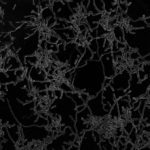Link to Pubmed [PMID] – 23115042
Link to DOI – 10.1128/IAI.01092-12
Infect Immun 2013 Jan; 81(1): 238-48
Candida albicans is a normal resident of the human gastrointestinal and urogenital tracts and also a prevalent fungal pathogen. During both commensalism and infection, it must match the immunological defenses of its host while adapting to environmental cues and the local nutrient status. C. albicans regularly colonizes glucose-poor niches, thereby depending upon alternative carbon sources for growth. However, most studies of host immune responses to C. albicans have been performed on fungal cells grown on glucose, and the extent to which alternative physiologically relevant carbon sources impact innate immune responses has not been studied. The fungal cell wall is decorated with multifarious pathogen-associated molecular patterns and is the main target for recognition by host innate immune cells. Cell wall architecture is both robust and dynamic, and it is dramatically influenced by growth conditions. We found that growth of C. albicans cells on lactate, a nonfermentative carbon source available in numerous anatomical niches, modulates their interactions with immune cells and the resultant cytokine profile. Notably, lactate-grown C. albicans stimulated interleukin-10 (IL-10) production while decreasing IL-17 levels, rendering these cells less visible to the immune system than were glucose-grown cells. This trend was observed in clinical C. albicans isolates from different host niches and from different epidemiological clades. In addition, lactate-grown C. albicans cells were taken up by macrophages less efficiently, but they were more efficient at killing and escaping these phagocytic cells. Our data indicate that carbon source has a major impact upon the C. albicans interaction with the innate immune system.

